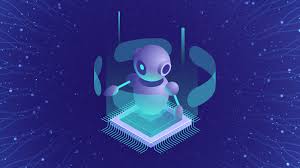Source: aithority.com
The emergence of Robotic Process Automation (RPA) was a watershed in helping businesses cost-effectively acquire and tap into the value of data. Thanks to software robots, massive quantities of electronic information were no longer trapped in internal and external systems, and businesses could now harness the power of RPA to access, manage and use this data in powerful ways.
At its core, RPA solves problems associated with data-centric manual tasks and remains ideal as a tool that interacts with websites, business and desktop applications, databases and people to execute repetitive work. Simply put, RPA is the “handwork” of processing electronic data. It empowers human employees to shift from being data gatherers to data users; they can focus on more cognitive and strategic business initiatives that better serve customers—and increase their job satisfaction.
But what about the document-based tasks that are equally, if not more, time-consuming and costly?
This six-part blog series will guide readers through the latest concepts in the multichannel document capture and intelligent OCR, with an emphasis on how AI has transformed what’s possible in making your documents and data work for you and not against you.
Consider that a typical employee uses 10,000 sheets of copy paper every year and spends 30-40% of their time looking for information in email and filing cabinets. It’s easy to see why businesses with document-intensive processes Fcommonly struggle with high volumes of paper and electronic documents, multiple disparate communication channels, manual repetitive processing steps, and hard-to-integrate backend systems. These challenges reduce information visibility and enterprise agility, swell operational costs, and slow customer response and resolution times. Keeping up with government and industry regulations due to lack of control and visibility over each step of their business processes adds another layer of difficulty.
What’s needed is a way to make these document-based processes more efficient by automating the acquisition, understanding, and integration of the documents and unstructured information contained in them.
Fortunately, Artificial Intelligence (AI) has made this a reality with cognitive document automation. Cognitive Document Automation (CDA) works alongside multichannel document capture (including mobile) to give users the power to quickly and accurately acquire and process any document of importance (yes, ANY document). Examples include new customer application forms, tax forms, insurance claim forms, mortgage packages, onboarding documents, supporting documents, invoices, sales quotes, sales orders, purchase orders, contracts, shipping documents and so on.
CDA is the intelligent “head work” of understanding what the document or email is about, what information it contains and what to do with it. Done right, CDA reduces document processing costs, increases productivity and data quality and enhances compliance. Together, RPA and CDA create exponentially better results for your organization, automating all document- and electronic data-intensive processes, speeding service and improving the customer experience.
Build and Manage a Digital Workforce
Though the benefits and ROI of RPA and CDA—both individually and when combined—are substantial, these capabilities are increasingly seen as essential components of a larger Intelligent Automation platform. Intelligent Automation employs numerous intelligent technologies to manage a powerful “total” workforce comprising digital and physical workers.
Within a single, unified Intelligent Automation platform, organizations can augment RPA and cognitive capture with other smart capabilities such as process orchestration, advanced analytics, and mobility and engagement. Such a comprehensive business workflow can orchestrate robots and humans to automate and handle exceptions around document and data capture tasks―helping businesses become the workforce of tomorrow and today.
